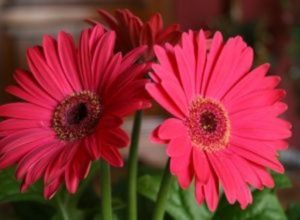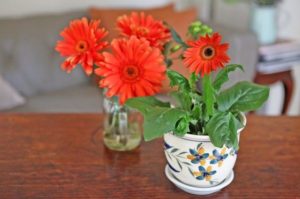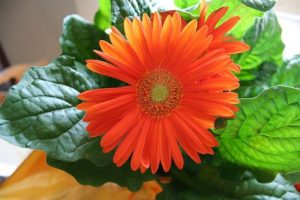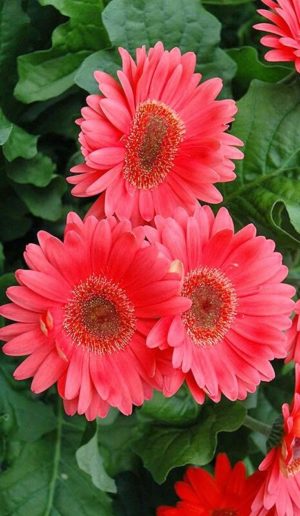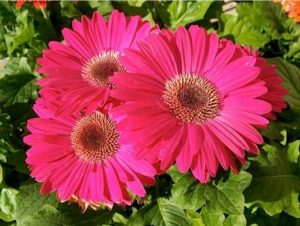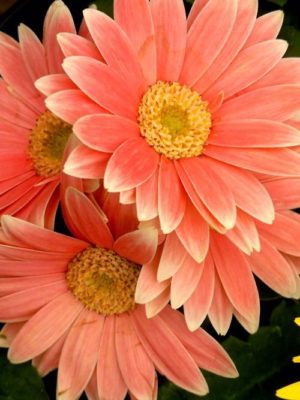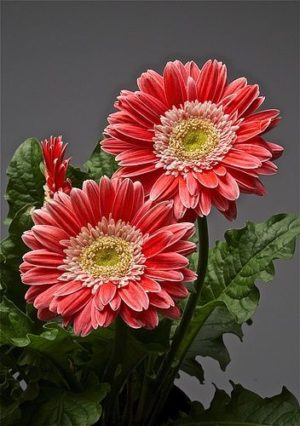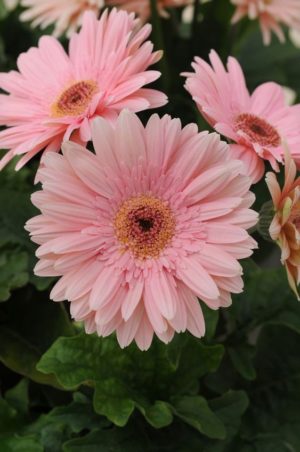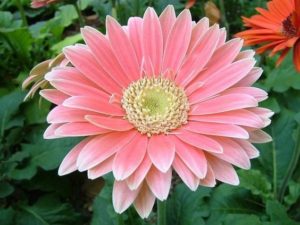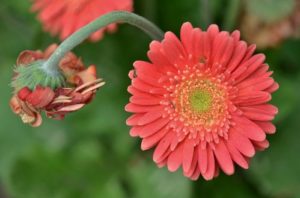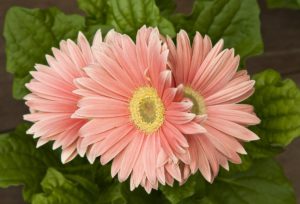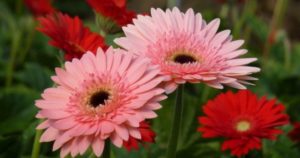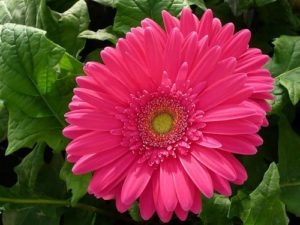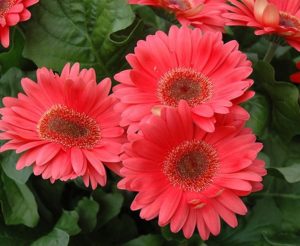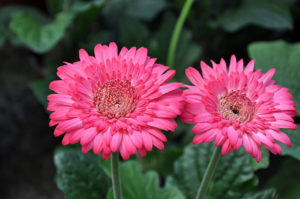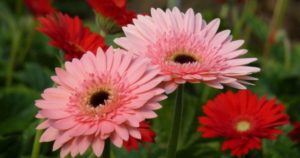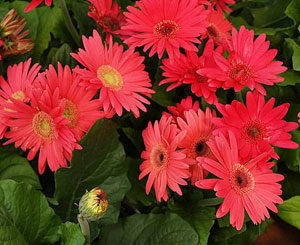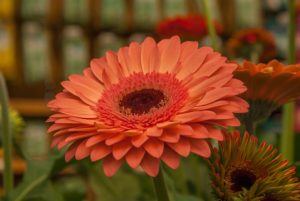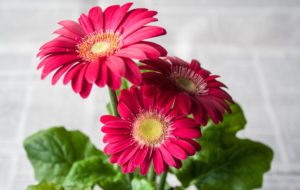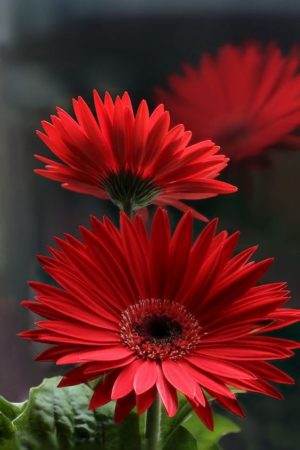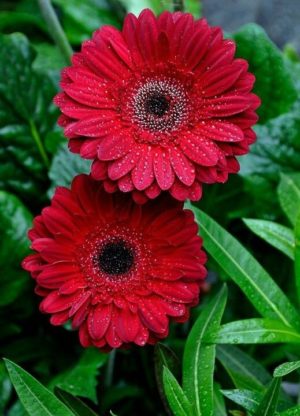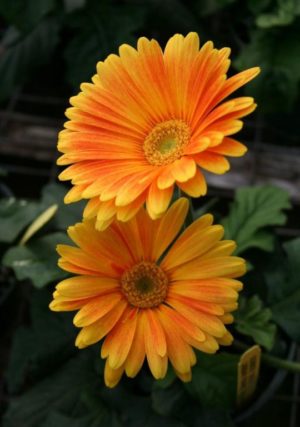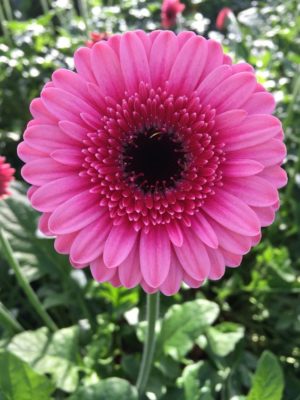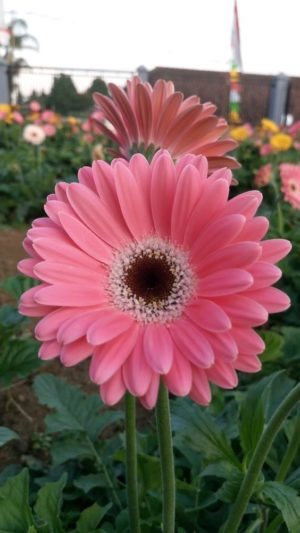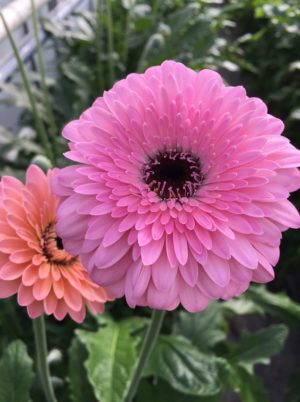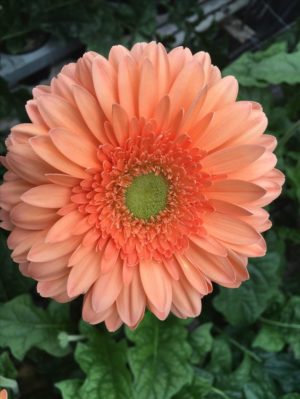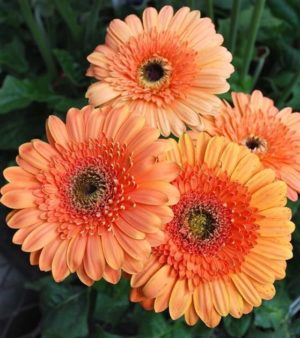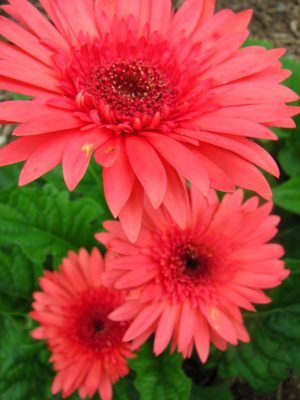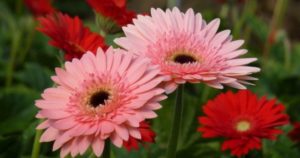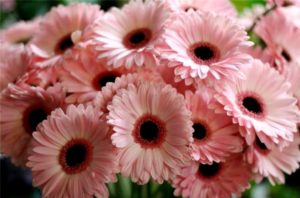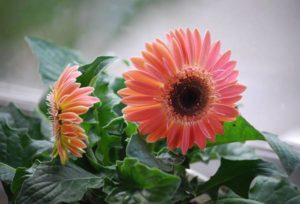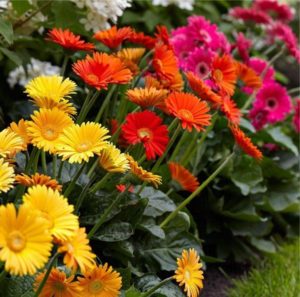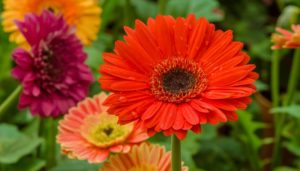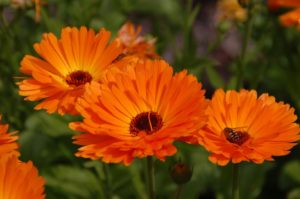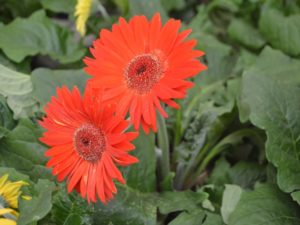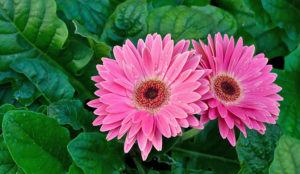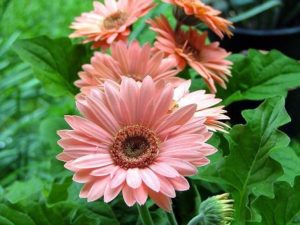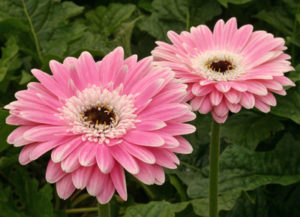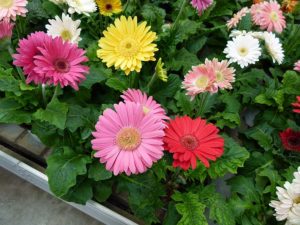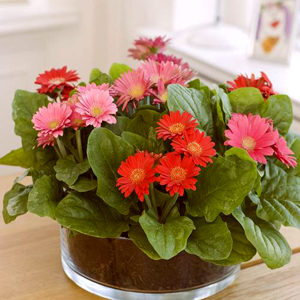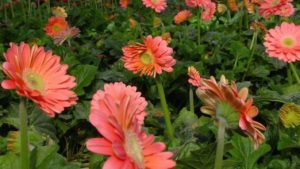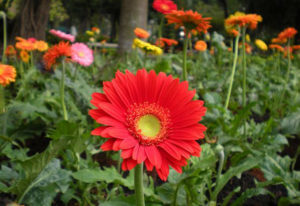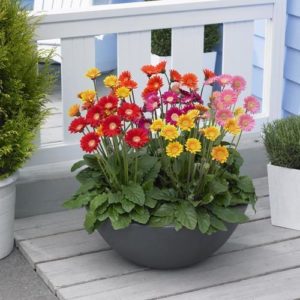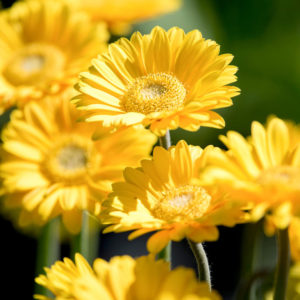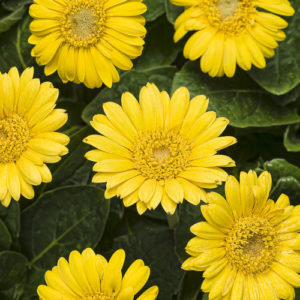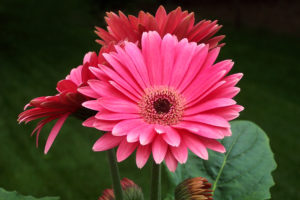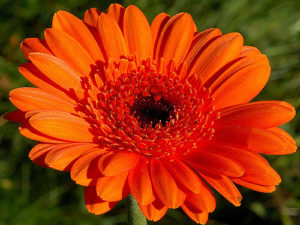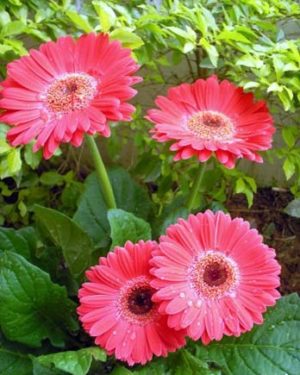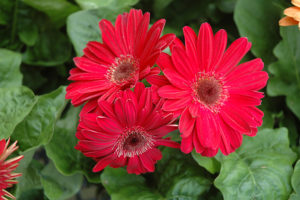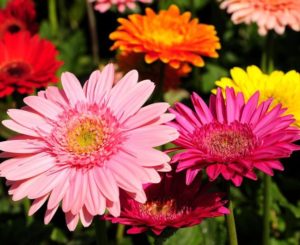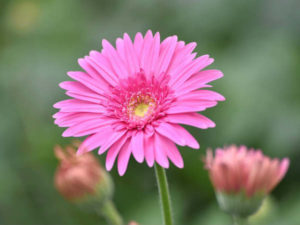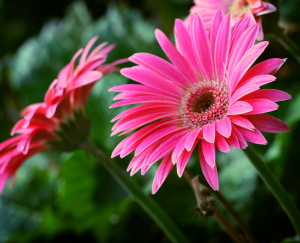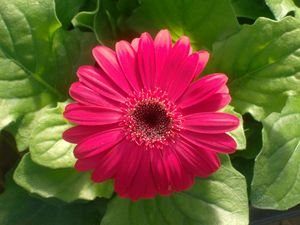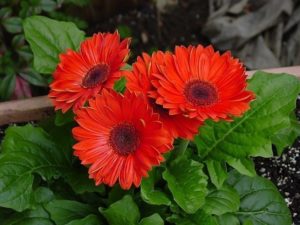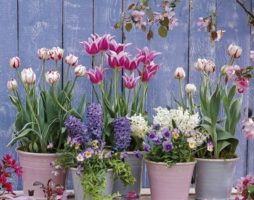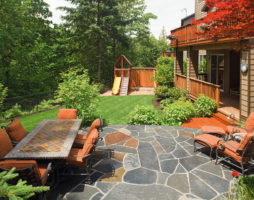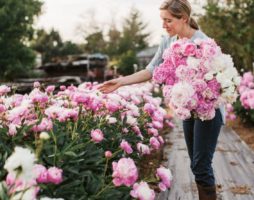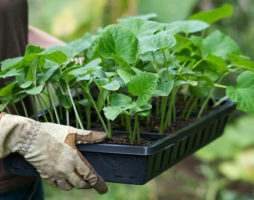We are used to seeing these luxurious flowers in bouquets. They feel pretty good in vases, but still, their life span in cut form is extremely limited. If you want a magnificent plant to delight you with its presence all year round, place it on your windowsill or in your garden. The flower is not too whimsical, but it will require a certain amount of attention to itself. So, a few words about how to care for gerbera at home.
A bit of history
The perennial is a representative of the Astrov family, although in appearance the flower is more similar to chamomile. The large core is framed by numerous leaves. The color palette is almost limitless.
Natural habitat of gerberas: Japan, Madagascar, Africa, expanses of China. The plant is well known in the world. It has become a business object, and today it is grown on a cut on an industrial scale. Breeders have not forgotten about lovers of home flowers either. They are offered an uncountable number of plant varieties suitable for growing in the house and on the balcony. Photos of gerberas will help you navigate the assortment. Usually, low-growing species are chosen for keeping in the house, up to 25 cm in height, blooming twice a year, although there may be options.
But buying a flower is half the battle, you need to create favorable conditions for it, then it will live with you for up to three or four years, and will not die immediately after the resettlement.
back to index ↑Gerbera home: cultivation and care at home
Where to begin
All flower growers know that flowers bought in a store need an immediate transplant. However, in the case of gerbera, this procedure is better to be postponed. It will need to be completed, but only in two or three weeks. The fact is that the flower needs to adapt to new conditions of detention. He himself will give a sign when he is ready to move to a new "home". The plant will take on a cheerful appearance, its leaves will rise.
The next step in answering the question of how to care for a gerbera in a pot will be the actual choice of this same flowerpot. Attention should be paid to the shape and height of the container. These are more important parameters than transparency. The roots of the flower are not involved in photosynthesis, so access to the light system does not matter, and there is no need for a specific transparent pot. Gerbera will feel great in a deep clay flowerpot, which expands noticeably towards the top.

For gerberas, a deep pot is suitable.
Having decided on the pot, take care of the selection of the soil mixture. Since the flower came from the store in temporary soil, it will have to be completely replaced. Don't forget to put a drainage layer. The flower is transplanted together with a lump of root earth. It is not recommended to remove it, in order to avoid damage to young roots. The pot is disinfected before use by dousing with boiling water. This must be done, especially in the case when a used flowerpot is used.
The flower must be deepened so that the root collar remains above the ground. It should be visible 1-2 cm.

After transplanting, the plant needs to be fed
After transplantation, a period of active feeding is recommended. Nutrients are applied at intervals of three days.
How to care for gerberas further
“Growing a gerbera involves spraying it regularly in the winter and enduring heat.”
Lighting and location. Gerberas are photophilous and prefer fresh air, so the room where they will be should be well ventilated and well lit. Adults are not bad even in direct sunlight, but still you should not experiment. It would be much better for a flower to be framed by diffused light. In the summer months, it is generally worth taking it out to the balcony.
Temperature regime. Since the gerbera is a tropical plant, the heat is much easier for her to endure than the cold. She will feel comfortable in a room where the temperature does not fall below 200C and does not rise above 250C. For the time of natural dormancy, the flower should be removed to a cooler place, but it should not be colder there +140.
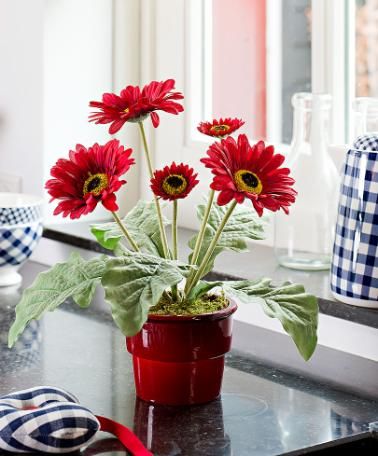
Gerberas are photophilous and prefer fresh air.
The soil. When choosing it, pay attention to acidity. Slightly acidic soils are ideal. If caring for gerberas in pots at home means making your own soil mixture for you, then use the recipe from professionals.. Mix:
- 2 parts of leafy soil;
- 1 part peat;
- 1 part sand.
Watering. The flower is moisture-loving, so the condition of the soil should serve as a guide. She can't dry out. The surface of the soil must be kept slightly moist. Irrigation water should be separated, have room temperature. Cold water is detrimental to the plant.
You can water either from the top or through the pan. Use a watering can without a spray nozzle. Watering is done around the perimeter of the pot. Water should not enter the root rosette.
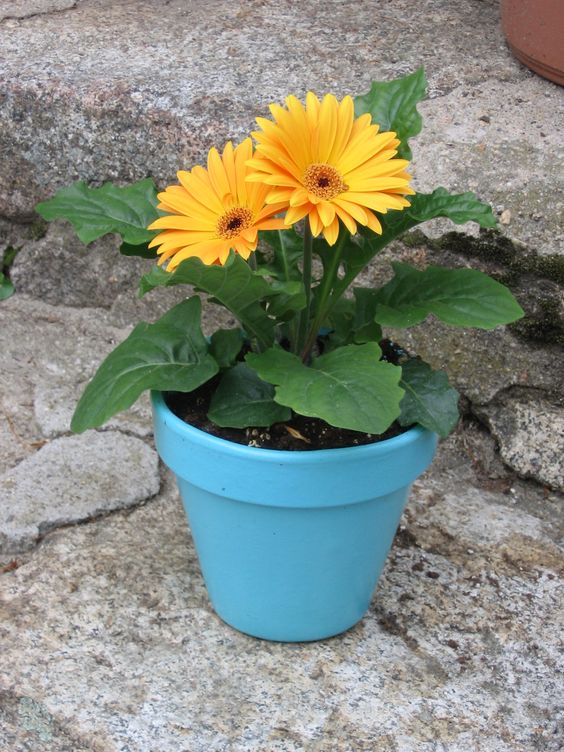
Potted soil must not dry out
If tray irrigation is selected, then proceed as follows. Pour water into the pan and leave it there for 30 minutes. After a while, the remaining liquid will certainly merge. Do not forget to do this, otherwise stagnant moisture will cause the disease of the flower. It can be affected by fungal infections or powdery mildew.
Spraying. Cultivation of gerbera provides for its regular spraying in winter and persistent heat. Dry air will provoke a halt in the growth and development of the plant. When performing the procedure, it is important to spray moisture exclusively on the leaves and stem of the flower, without getting on the buds and the root rosette.
Top dressing. Gerberas do not tolerate organic matter, so neither humus nor organic fertilizers from chemical production are added to the soil. They need minerals, so stock up on complex mineral supplements that you will apply weekly or at intervals of 10 days.

Gerberas need regular spraying.
Transfer. If you look at tips on how to grow gerberas at home, you will see that experts do not recommend taking pots with a "reserve". Once in too large a flowerpot, the plant will stop flowering and will develop the root system in order to gain a foothold in the ground. In this aspect, it will be correct to give preference to a pot with a slightly larger volume than the one in which the plant is currently located. Transplant time is early spring.
Pruning. Caring for a room gerbera at home does not include a pruning procedure. Faded buds are removed so that they do not inhibit the growth of the flower as a whole. It's important to do it right. They cannot be cut. Peduncles are removed manually by breaking them out of the nest. So you reduce the risk of infection of the cuts and the spread of rot throughout the bush.
Natural cycles of development. To grow indoor gerbera, you have to try. She will need to create adequate conditions of detention, similar to natural ones, and for this she needs to know the stages of flower activity.The annual life cycle of a gerbera looks like this:
- November - February - a period of rest. Gerbera is not disturbed during this period. Reduce the frequency of watering and practically stop fertilizing.
- Mid-February is the awakening stage. Time of activation of vital processes. The frequency of watering is gradually increasing, the number of top dressings is increasing.
The dormant phase can be canceled, but then the flower will not last longer than two years and will become unsuitable for further cultivation.
Reproduction. In the case of gerberas, this is growing from seeds, cuttings and division.
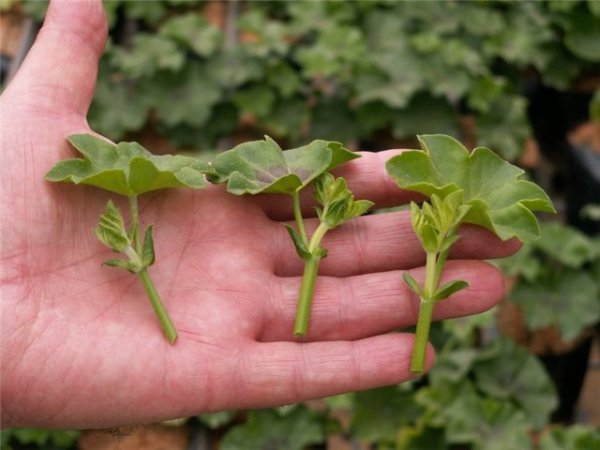
Propagation of gerbera by cuttings
You can get planting material for cuttings by cutting young shoots from a bush. The plant is dug up, washed from the remnants of the soil, after which a rosette of leaves is cut off from it. We plant the workpiece in a greenhouse and wait for the formation of axillary buds. The shoots that have emerged from them will be used for cuttings.
The division of the bush is one of the main ways of reproduction of the species. Such a planting of a gerbera flower and subsequent care for it are the least problematic.. All that needs to be done is to dig up a bush, disassemble it into separate shoots with leaves, and then plant the resulting material in prepared pots or holes.
In the absence of an adult plant, seeds will become the seed. We will talk below about how to handle them in order to get good germination.
How to grow gerbera from seeds
Growing seedlings is a more laborious and lengthy process. Seeds can be obtained from your gerberas or bought at the store. In the latter case, pay attention to the date of assembly of the material. If the contents of the package are older than eight months, good germination can not be expected.
Seeds should be soaked for several days before sowing. It is better to do this on gauze. Make sure that the fabric does not dry out during this period. After the sprouts hatch, the seeds are ready for sowing in the ground. Put them in grooves prepared in loose soil and sprinkle sand on top. To create appropriate conditions, cover the container with film or glass. The optimum temperature for germinating seedlings is +250.
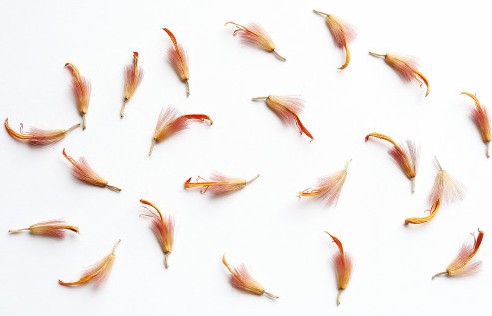
Seeds are soaked for several days before sowing.
Will gerberas that have not yet risen require care? Undoubtedly. Do not forget to regularly ventilate the makeshift greenhouse and moisten the soil. The latter is best done with a spray gun. This way you can avoid excessive moisture.
The first shoots should be expected for 10-14 days. After another two weeks, the sprouts will give the first leaves. When two leaf pairs appear on the seedlings, the seedlings can be dived and transplanted into the ground or pots.
If sowing seeds is supposed to be directly into the garden soil, lay them out according to the 3x3 scheme. Planting depth 5 cm. From above, the holes are covered with ordinary soil, without tamping. Further actions, as in the case of a home greenhouse: watering, airing, picking. For the convenience of seating, you can plant the seeds in peat cups.

The first shoots appear on the 10-14th day
Potted gerberas: how to care for flowers at home to bloom?
There can be several reasons for non-flowering. The first is natural, that is, the onset of a period of rest. However, if flowering does not resume after three months, it is worth considering the quality of lighting.
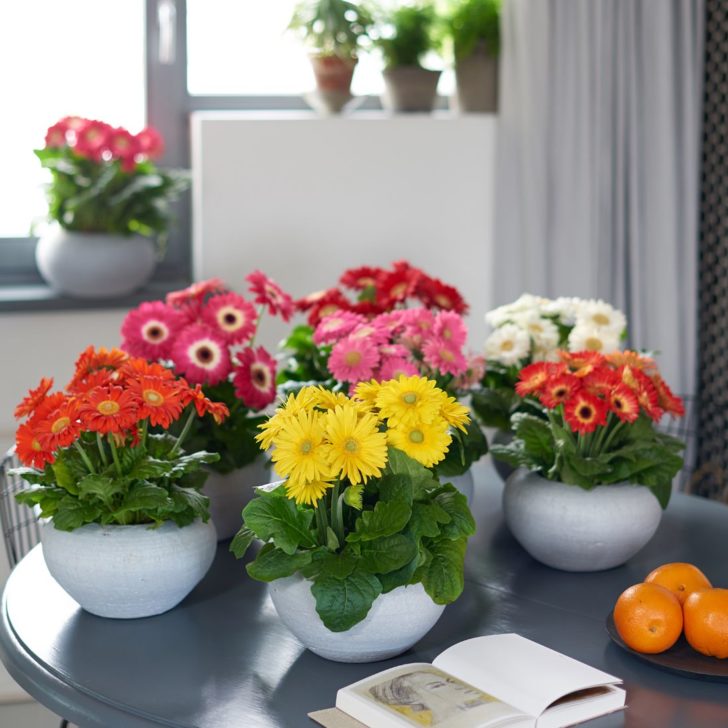
The reason for the lack of color may be a large pot
The reason for the lack of color can be an overabundance of nitrogen in the soil, which enters it with nutrient compounds.
A gerbera growing in a disproportionately large pot will not bloom either, as it will be busy forming roots and building green mass.
back to index ↑Garden gerbera flowers: planting and care
"Home care for a gerbera flower growing in the garden comes down to proper watering with adequate top dressing"
Growing gerberas in open ground is much more difficult than in a pot, but with some effort it is possible. It will be easier to cope with the task in the southern regions.There, in sunny gardens, it will bloom from late April almost to November. It will not need to be covered for the winter or protected in any other way. In the middle lane, of course, flowers will grow, but the flowering period will be reduced.
Planting in the ground begins as soon as the night frosts recede, and the earth warms up sufficiently. A sunny area should be taken under the flower garden. In extreme cases, plants can be placed in partial shade, but on condition that the sun will not be there only in the morning. Otherwise, the flower will spend all its strength on reaching out to the sun, it will become long and the buds on it will not bloom.
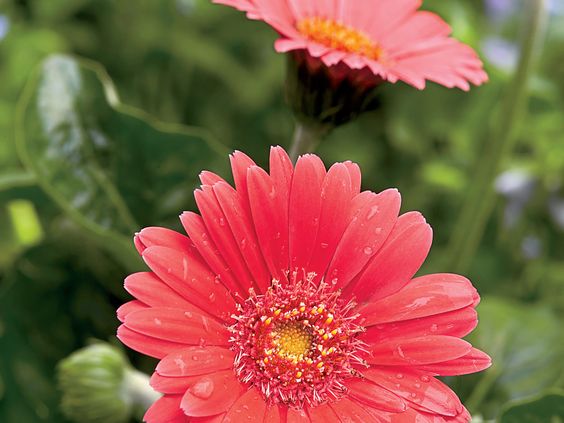
Gerberas do well in sunny gardens.
The soil of the future flower bed should be moderately drained. If the site is wet, you need to consider a way to remove excess moisture.
Home care for a gerbera flower growing in the garden comes down to proper watering with adequate top dressing. Plantings will need to be watered more frequently during the growing season. Do this carefully so that the water flows under the root, and not on the leaves, and even more so the flower heads. If water collects in the rosette of leaves, the plants may rot.
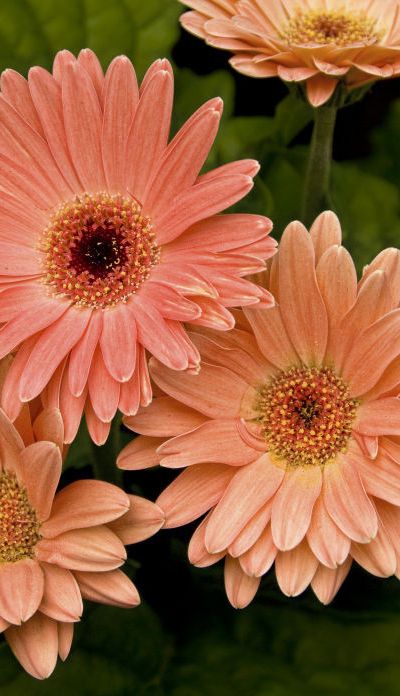
Caring for gerberas in the garden comes down to regular watering.
Transplanting garden gerberas is also not relevant. However, in cold regions, flowers do not overwinter in the ground, if you simply cover them with a thick layer of spruce branches, sawdust, and leaves. They need to be dug up and put away for the winter in a well-ventilated and well-lit room. The temperature in it cannot be lower than +100. Plants dug out together with a clod of earth are stored in a wide container, possibly in a basin or box. Further care as for indoor gerberas at home.
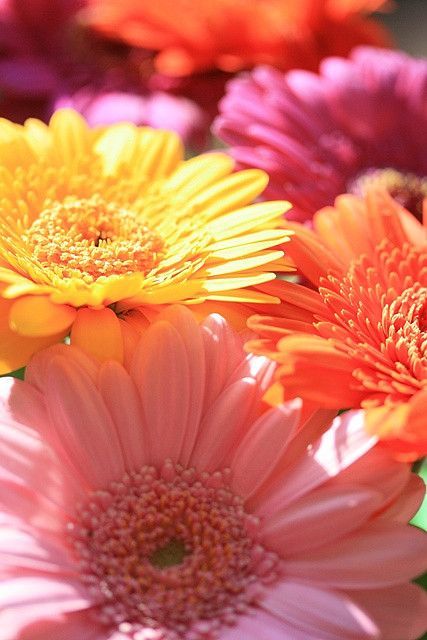
Gerberas are dug up and harvested for the winter
As for top dressing, it is applied twice in the spring, and three times a month in the summer. Keep an eye on the condition of the leaves. The appearance of pale areas on them will be evidence of a lack of magnesium. An additional dose of magnesium sulfate solution will help to deal with the problem. 10 g of powder of the drug is dissolved in five liters of water, and the resulting composition is gradually poured under each bush.
As you can see, growing a gerbera in the garden and caring for it is not as laborious as it might seem at first. Moreover, with enough attention, the flowers will give you excellent seeds, from which you can grow a whole greenhouse of multi-colored beauties for cutting next year. The only caveat: pollination will have to be done manually. Do not forget about this if you want to get seed material, the quality of which you will not have to doubt.
back to index ↑Summarizing
If you want to get a really chic flower that will become a true decoration not only in the garden, but also at home - try to grow and propagate gerberas on your own. Don't be afraid of difficulties. They are quite manageable. These are very grateful plants. Quite a bit of diligence and they will delight you with violent long flowering. To deal with the intricacies and differences of growing a flower, photos of caring for a room gerbera at home and in the garden will help. Good luck!
back to index ↑Photo gallery - gerberas
Video
